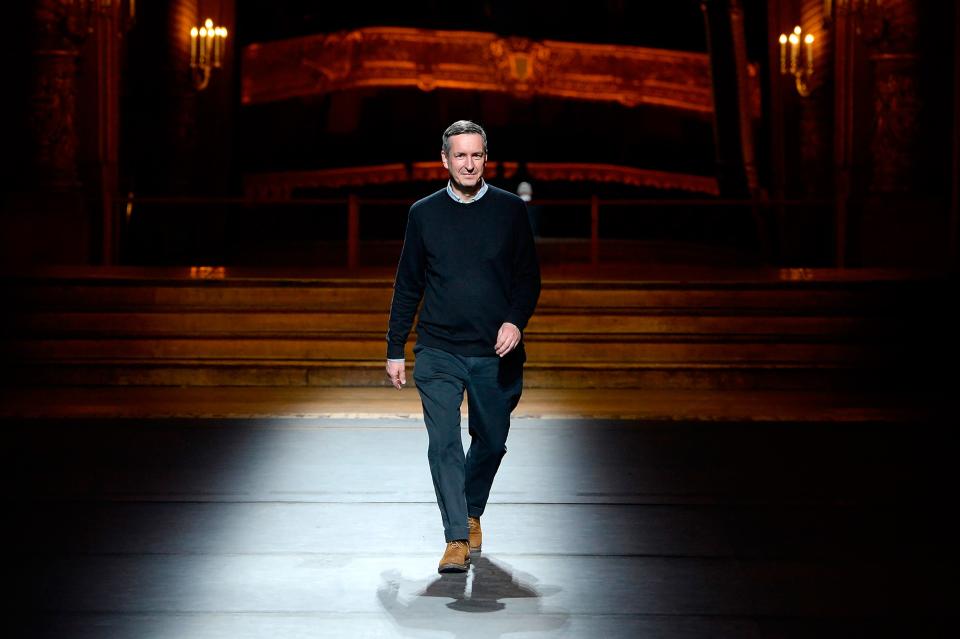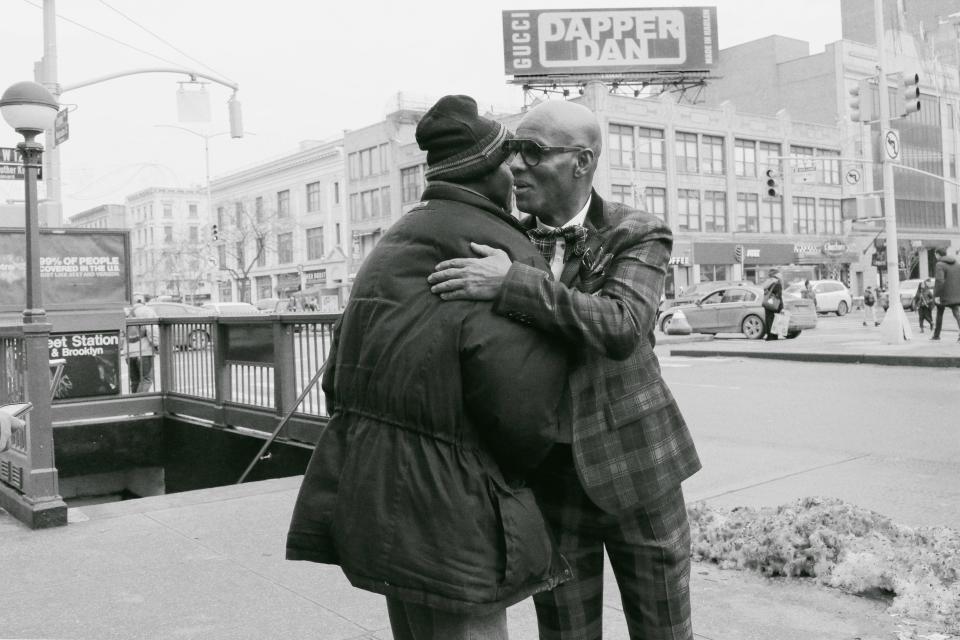Dries Van Noten Talks Staying Independent and Designing In the Instagram Age
Dries Van Noten lists more than 40 different colors in the description of his spring 2018 men's collection, including such delicious hues as plum, truffle, pistachio, and zabaglione, a creamy Italian dessert.
“I wanted to push the whole idea of color for men,” he says in a thick Flemish accent that makes even the word “color” sound like a strange and beautiful foreign concept. “You can go quite far with colors, as long as you keep the shapes recognizable.” So that chromatic cornucopia he dreamed up—inspired, in fact, by automobile paint and interior shades from the 1950s—became a color-blocked run of otherwise straightforward menswear. The boxy suit jackets, pleated trousers, loose sweatshirts, and belted trench coats in the collection require no fashion expertise or sartorial risk-taking impulse. Just put 'em on and go.
Despite his pedigree as a member of the avant-garde Antwerp Six—a massively influential collective of young designers from Antwerp's Royal Academy of Fine Arts that includes cult design heroes Ann Demeulemeester and Walter Van Beirendonck—Van Noten is sensitive to all the ways men might feel put off by more daring high fashion. But Van Noten is by no means a conservative designer. Over the years, he's established himself as one of the fashion world's most adored and influential creators by balancing, say, the mind-blowing maximalism of a silky floral-print jacket covered in sequin embroidery with the timeless elegance of a perfectly cut pair of black trousers.
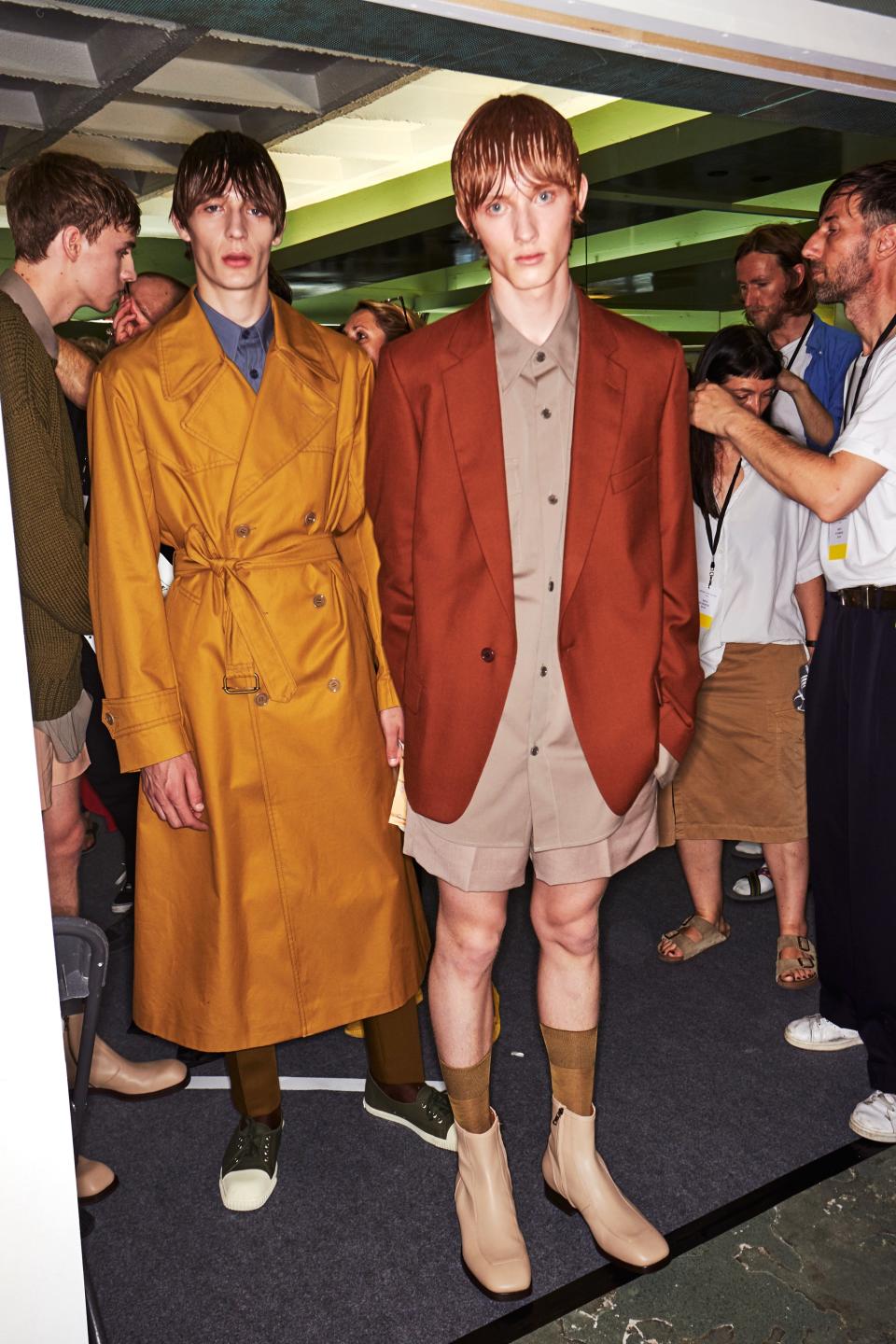
Commercially, Van Noten is also in a very rare and unique position for a designer operating at his level: he has run his label with complete independence for 30 years, releasing more than 100 collections for men and women, and opening eight stores globally, beholden to no one but himself. It's a stunning fact in today’s top-heavy fashion industry.
We caught up with the legendary designer to discuss his standout Spring-Summer 2018 collection, how he’s managed to stay independent all this time, and why men are dressing more adventurously than women right now.
GQ Style: How did you arrive at the colors you used in the spring collection? Do they come from a place that inspires you? Do you notice them somewhere, say, in your garden, or somewhere in your life?
Dries Van Noten: Often we look at an artist or we have kind of a starting point. This season was really kind of playing with colors, building up a color card which was referring to 1950s strange car colors and car interior colors. Originally we had somewhat bright colors, which I took also out of collection, because for me… it’s a delicate thing. OK, bright colors are nice for a fashion show, but what are you doing in real life with that? For me, it always has to be a little bit both together. It has to be pleasing for the eye of a fashion show, but then in guy at the end also has to relate to it and say, like, OK, this is all something which I want to wear—a combination of it has to be on show. For me, a fashion show is in part a dream, but also has to be a big part reality.
You’re always are able to incorporate patterns in all your collections in a way that feels really interesting but also approachable. How do you take some of your more interesting prints and make them things that men can relate to?
That for me it’s an important thing that when you do the more extravagant prints, you make it up in a style which is classic, like a parka or a nice coat. So that always one of the elements in the clothes is something that we can refer to. And we didn’t want the collection to be completely flower print, which are all taken from museum collections. But we used those historical prints of flowers—which are 18th and 19th century flowers—in garments which were inspired from surf shorts. So because a guy knows surf shorts are always printed in crazy flower prints, we have no problem using the 18th century and 19th century flower prints, because it’s a detail which refers to known things.
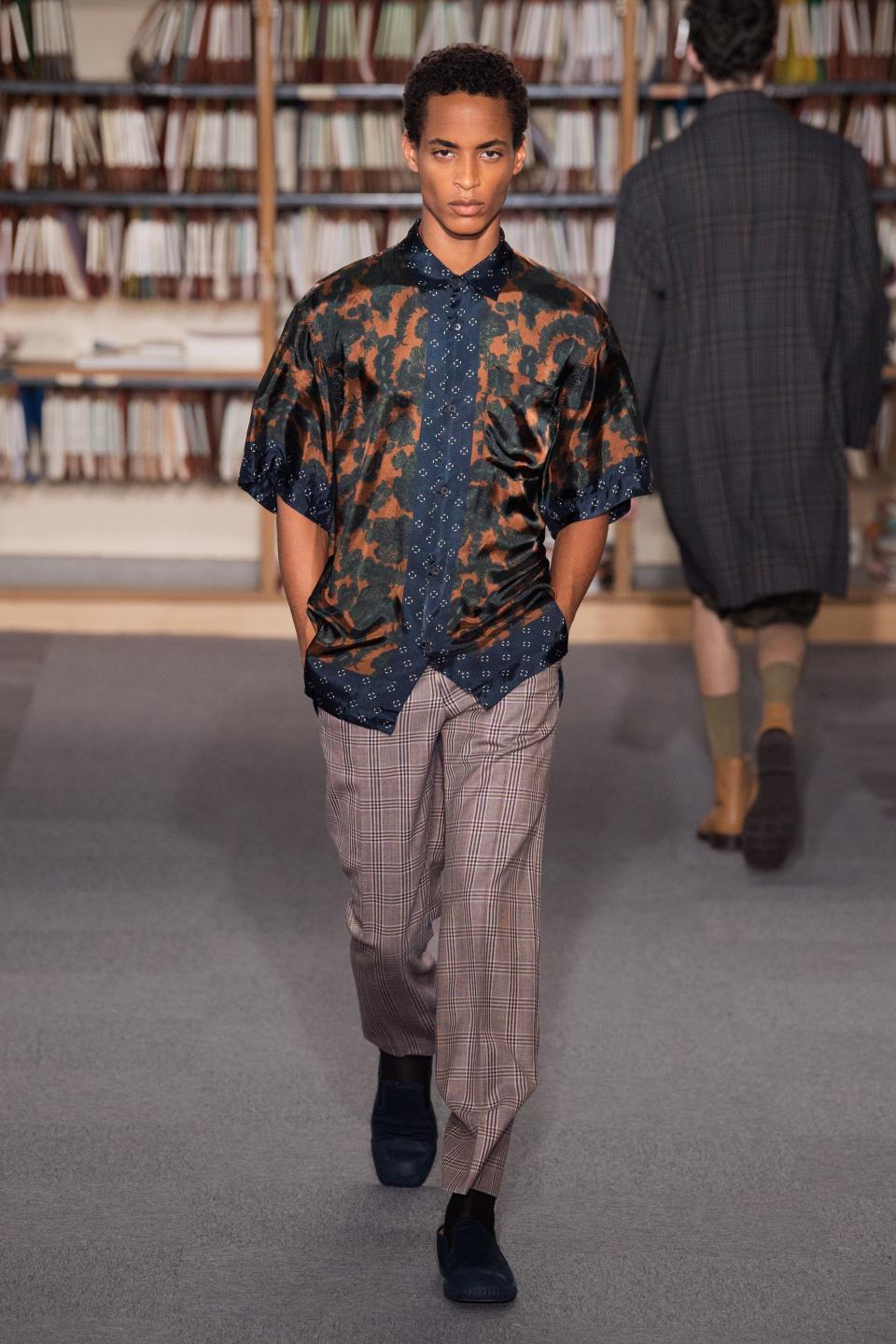
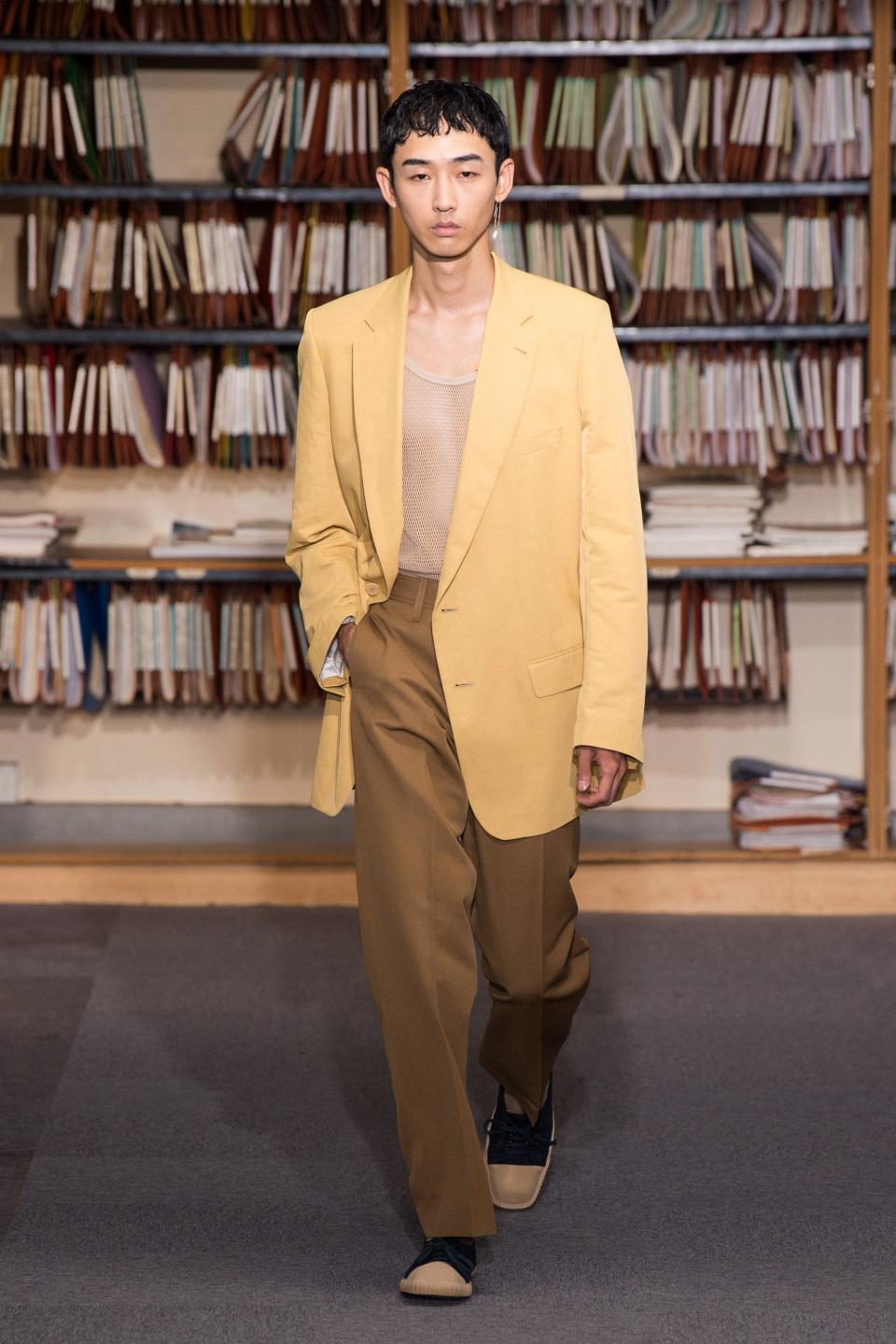
It’s interesting that your business remains independent. In a fashion industry that now feels like it’s very dominated by very large corporations, do you feel like in this climate, keeping your independence allows you greater freedom to create without too many commercial or corporate restraints? Does it feel to you like you have a different kind of freedom in the industry?
For me, of course, I never knew another situation. I think both things have their advantages and disadvantages, to be independent or to be part of a big group. My company has been growing in a very organic way, so we’ve been offered in the past several things by big groups, but every time we said no. We like the things the way that we do it. So of course production-wise and things like that, being a part of a big group would help. But on the other hand, of course, you lose also part of your freedom. So I’m very happy in the situation that we are and that we can take completely our own decisions, and for me that’s very, very important.
Is there something that you think you’ve done that’s made this possible that other designers haven’t been able to do?
I have a very good team around me. Because I mean, the first condition to stay independent is you have to find the people who also want to stay with you for the long term. The people around me have been here 20, 30 years. So that, of course, helps enormously. Of course, but it’s very important to find the right balance between the artistic side of the collection and the more commercial side, and that’s something which I really like to do, and I think that helps us stay successful in a time when maybe fashion is not always so easy.
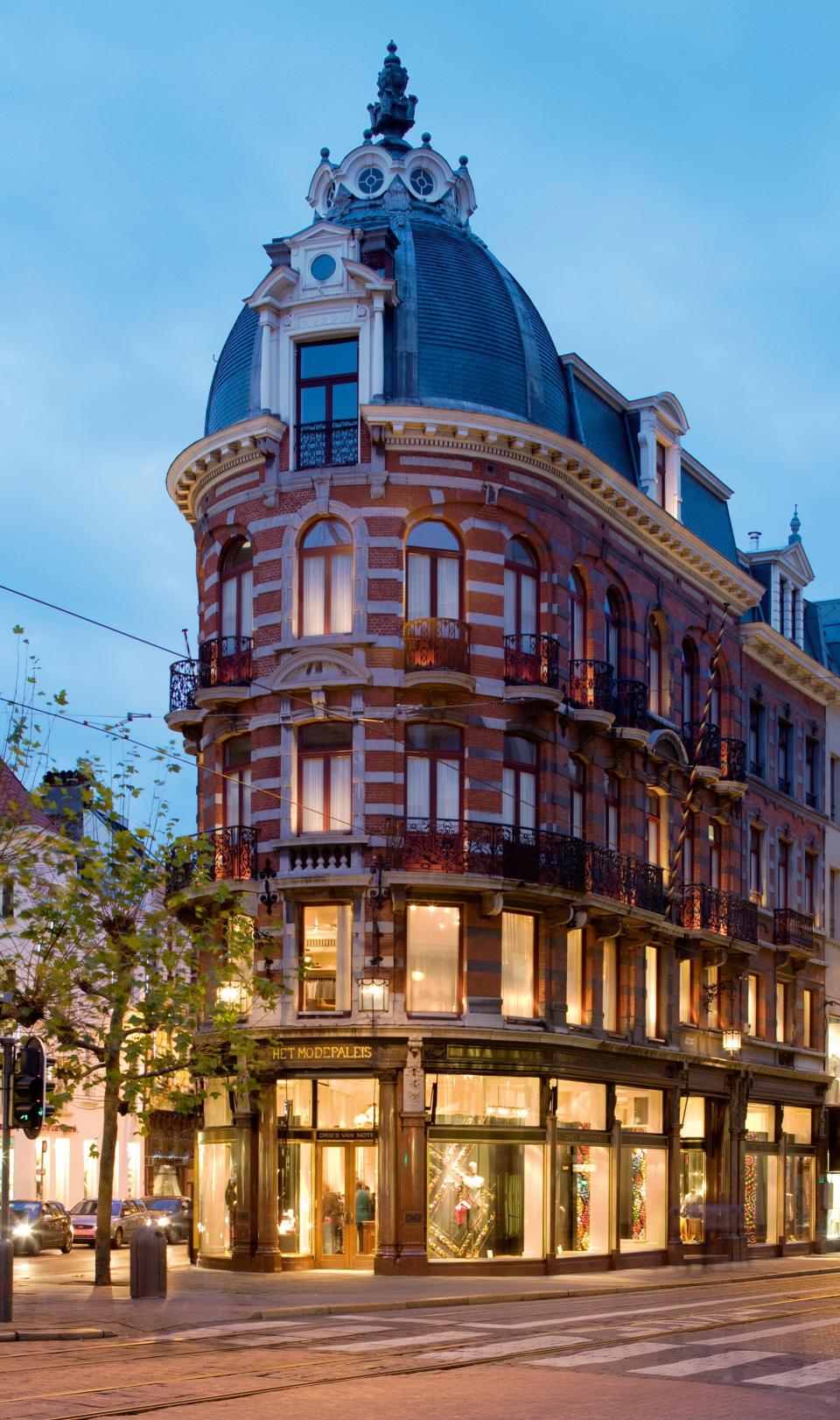
So you’re from Antwerp and of course you’re part of the famous Antwerp Six. What is it about Antwerp that makes it such a rich place for interesting new fashion? Does Antwerp continue to inspire your collections today?
I think living in Antwerp of course is very comfortable and very easy. I love big cities, but after a few days I just want to run away because it asks so much energy to live in a big city, to take a taxi or to take the metro. And big cities for me, it’s not really exhausting, but it eats energy to survive in the big city. In Antwerp it’s a very easy, comfortable way of living. But on the other hand also we are very central. If you’re in New York, you go uptown, downtown, we go, like, that way to Paris. Two hours by train and we are in Paris. We have a small airport here in Antwerp, so we go very often just for the day to London. We take the train and 50 minutes we are in Amsterdam, 50 minutes we are in Dusseldorf and Cologne. It’s so convenient to live here. So that, of course, helps I think.
Do you ride your bike to work when you go into the office?
I live 16 kilometers from the office. So in summer when the weather is nice, I do it by bike. But I like to bring my dog, so often I have to take the car because the dog doesn’t like to bike. [Laughs.]
Between social media and how that’s changing people’s relationship to designers and to the fashion, and the new ways designers are trying to do business and present collections, are there things that you’re seeing that feel new and exciting to you for fashion?
Oh, I think the whole business of fashion has of course changed enormously in the last 30 years that I’ve been busy making my own collection. But I think you have to grab the opportunities which suit you and you have to play with them and you don’t have to become the victim of it. Like “see now buy now,” I don’t believe in that at all for me. I think when you show a collection and customer really wants something, he has no problem to wait five months for it. On the contrary, I think that the fact that you have to wait for something sometimes is a nice thing. And when after five months you don’t want it anymore, then it’s the wrong garment for you so it’s good you don’t buy it. When you buy a garment from me, it’s because it’s a part of your wardrobe and you’ll wear it for several years. And I use a lot Instagram. I love all the social media, but I don’t want to be a victim of it. We also use it all for the company, but in a very subtle, discreet way.
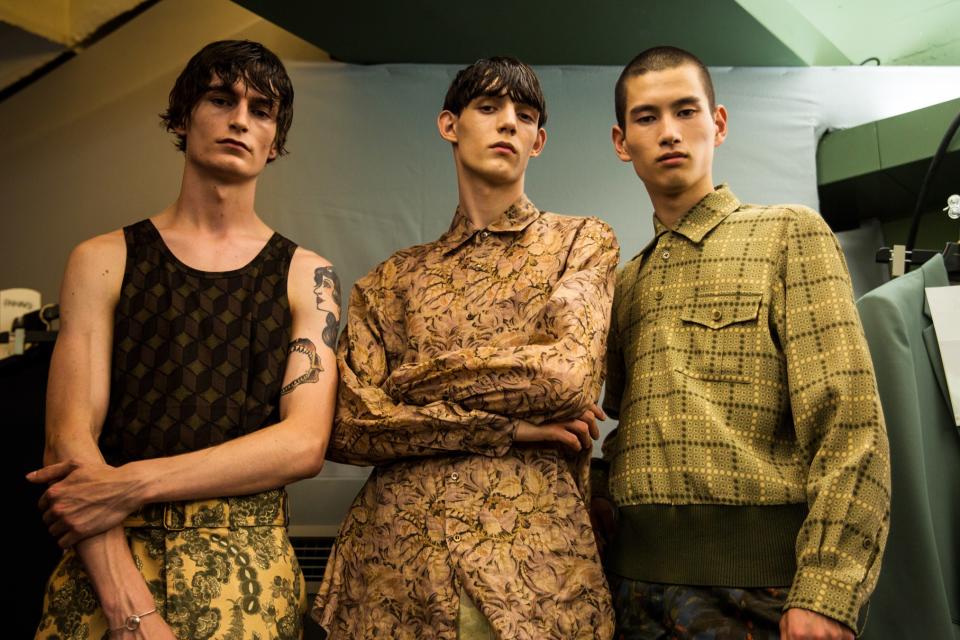
Are there things from fashion before the digital age that you miss? Are there things that have changed that you wish would come back?
Well, it’s a lot of things. There’s of course now the fact that most people see fashion shows on their mobile phone. Sometimes you have to think that really small motifs are difficult to use because you don’t see anything. You see just a blur on your phone. Quite a lot of people judge a collection on their phone. And this is more for women, for instance, but nice necklines in the back? Don’t do it, because people see only first from the front. So for instance, when we play with badges in menswear, we put a few of the badges on the front and not only on the back of a garment, because then nobody’s gonna see it. So those are things that you have to keep in mind, but you work through, you work around it, and that’s perfectly OK for me.
Are some things that you see the fashion industry, or where your business is headed in the future, that you’re looking forward to seeing happen? Things, you know, in the years to come that you hope, new things that you are excited to see happen?
We always are open for new challenges and thinking a bit about how we will do with things. Because on one side, for a lot of collections, the whole only way of doing retail is having their own stores or going in department stores. But one of the most exciting things that’s happening now is that you see more and more stores opening up again, young people who start in less expensive neighborhoods in cities, like an exciting neighborhood store where they don’t have all the labels which you must have, but they have a special edition of a sportswear label mixed with one or two designers, where you have also some locally made stuff. And I think in every city you have these things now opening up, which is a fantastic thing, because it’s very good to have little label stores where you have actual people who can tell you something in person about new things that they’ve found, and tell you stories about the clothes what they sell. That’s fantastic.
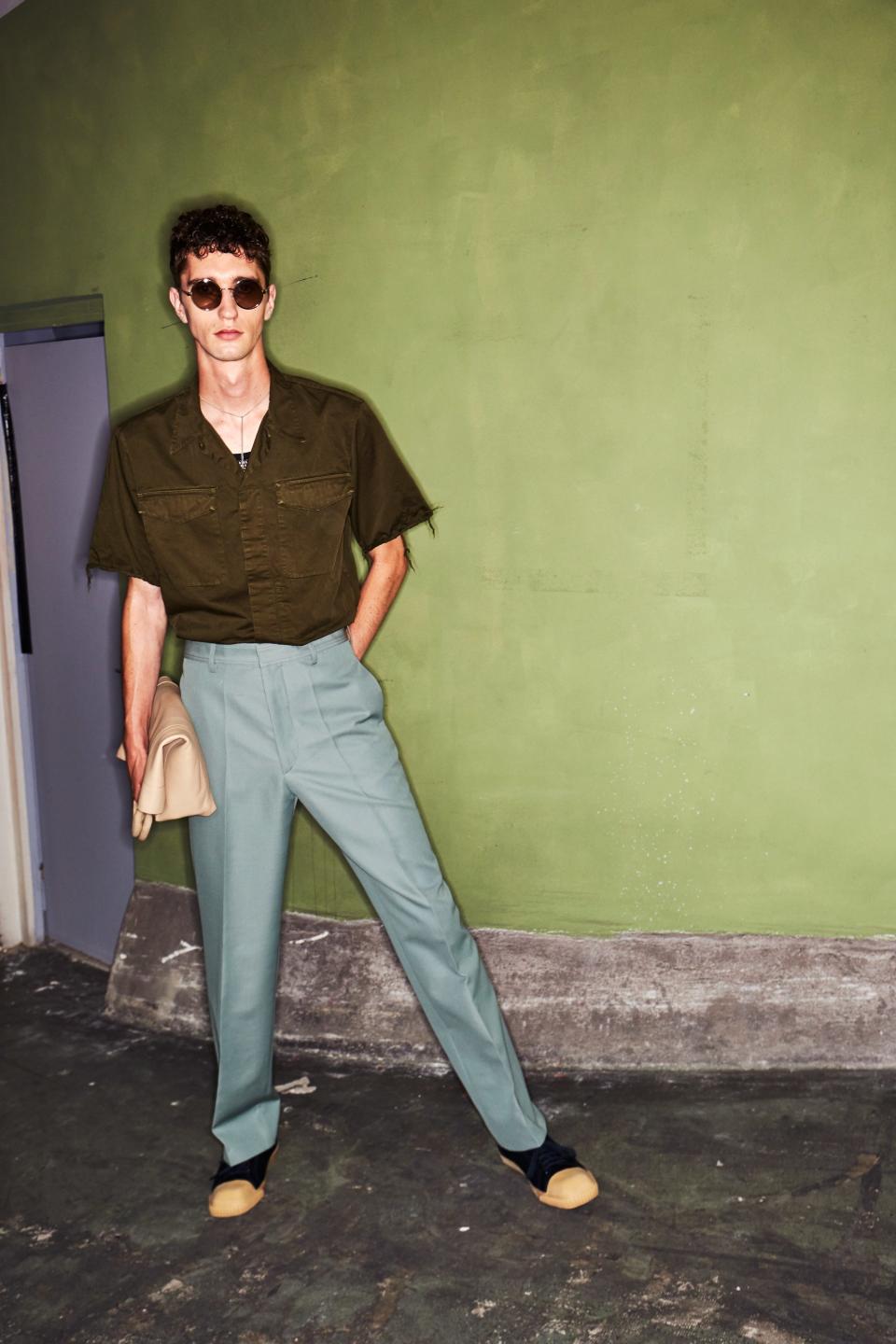
It seems to me that partly because of maybe the internet and just the way everything is so accessible that men are a little more interested in fashion, a little more confident with their style, a little more adventurous to try new things—
I think that, for the moment, men are more adventurous than women.
Really?
Yeah. So that’s good, no?
Yeah, it is. Why do you think that is, and why do you think that’s happening now?
Well, I think of course information has to do a lot of it. So people now really see much more things and people from all over the world, they see young people from all over the world. When you get more information, you pick up certain things and you want to not follow. I think quite often girls at the moment have a tendency more to follow the rules. Where quite a lot of guys want to stand out a little bit. In a very simple way, they just want to be a little bit different than the others.
Street Legend
Inside the new atelier of Dapper Dan, the tailor whose 125th Street shop defined the high-flying look of Harlem’s cocaine ’80s—and who’s now back in business, thanks to a Twitter controversy and an unlikely new arrangement with Gucci.
